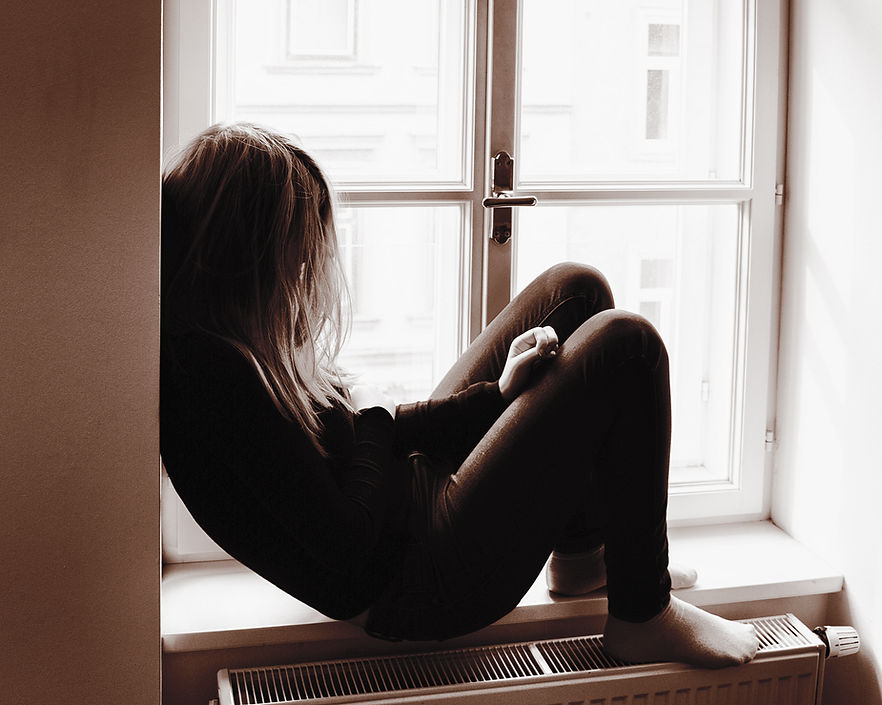Therapy for Anxiety
I think people, for the most part, know about anxiety. People usually associate anxiety with feelings of worry, fear, panic, or discomfort. They may have sweaty or cold hands or feet. They may have difficulty sleeping, getting, and staying asleep. They may struggle to relax; the body is activated, and the mind is racing. It may be difficult to breathe, your muscle may tense, or sensations of tingling or numbness. There may be experiences of “butterflies in your tummy” or stomach discomfort. Some feel anxiety is when you are not yourself.
For me, to put it simply, anxiety is when you are focused on something that can potentially happen. People will have a thought that is bothersome to them. One may notice this in the movement in their body. Some will see this in how their digestive system is reacting or activating. Anxiety is about the future.

So let’s take some time to talk about the different types of anxiety
What is generalized anxiety? Generalized anxiety is excessive worry and preoccupation with your thoughts in a variety of ways. You will feel stressed about various activities or events. You may have even made attempts to control these worries, but once you think you stopped worrying about one thing, you begin to worry about something different. Generalized anxiety is the physical, cognitive, and digestive symptoms. There may be restlessness, quick tiredness, challenges with thinking, forgetfulness, muscle aches, and challenges sleeping in children. The child struggles to fall and stay asleep, is restless at nighttime, and can be grumpy in the morning. They may have unexplained sweating, nausea, diarrhea, or complain that the symptoms may happen. In teenagers, the same symptoms occur, but the young person may also experience irritability, although this may not be observable by other adults. GAD is usually observed in children and teenagers by their performance with sports, school, peer relationships, etc. One belief is; an anxious child will grow up into an anxious adult if these symptoms are not appropriately and effectively addressed. In adulthood, the worries switch from school concerns to preoccupations about relationships, day-to-day activities, work, etc.
Now selective mutism is usually not discussed as much. Selective mutism is not why your girlfriend asks you to clean the kitchen, and you were distracted by the TV and forgot. Or when you tell your child to pick up his room while playing video games. Selective mutism is different. Initially, selective mutism is diagnosed in childhood. The child is not able to speak or communicate in specific environments. They are mute in the community, in school, or at home. There are many things a trained professional will need to rule out for an accurate diagnosis of selective mutism. It is estimated to be less than %1 of the population. Adults will see that their children can communicate in one environment, at home, with relative ease, and in other settings, there is no verbal or nonverbal language such as school.
In child and teenhood, you may also see separation anxiety disorder. Excessive worry, fear, or anxious feelings when separated from someone else. The child is distressed when leaving home or leaving certain people (parents, siblings). There is excessive worry that someone will be harmed in some way. There is excessive worry something terrible will happen because of this separation. They will refuse to go places or do things that could cause the separation. Sometimes there is a reluctance to go to sleep, eat, bathe, etc. Children will report nightmares or daydreaming about the separation. Others often notice this, and the child usually will verbalize their anxieties. There can be a build-up when the separation occurs, and the individual may complain about headaches, nausea, stomach pain, shaking in their body, etc. Although this usually occurs in children, it can manifest or remanifest in adults. This happens in interpersonal relationships and connections with animals.
There is also the idea about those who have mixed anxiety and depressive concerns. There is some debate if this is one clinical issue or if there are two clinical issues. However, there are concerns both in terms of anxiety (fears about the future) and depression (fears about the past). The mixtures of both are equally distressing and impact one’s life in simple ways to understand. In childhood, there is a fear of going to school; and worry about what happened at school. As a teenager, I am not good enough and not liked by peers and constant preoccupation about past events with peer relationships. In adulthood, there are fluctuating thoughts about the future and past. “I just can’t stop worrying about what’s going to happen.” And “I keep thinking about what happened. I can’t stop.”
Another part of anxiety is the phobias, and there are many. Arachnophobia (spiders), Ophidiophobia (snakes), Acrophobia (heights), cynophobia (dogs), Astraphobia (lightning), Trypanophobia (fear of injections), Agoraphobia (open or crowded spaces), Anthropophobia (people), Hemophobia (blood or injury), Aviophobia (flying), claustrophobia (enclosed or tight spaces), Glossophobia (performance anxiety) or other specific phobias. A phobia is an irrational fear or reaction. There is a deep-rooted sense of panic when the feared object is thought of or encountered. The intensity can range from annoying to debilitating.
I will leave with a few statements.
Anxiety develops from other risk factors related to genetics, brain chemistry, personality, and life events.
Anxiety is the most common form of mental suffering.
Anxiety is highly treatable.
Everyone experiences stress and anxiety at one point in their life.
.
